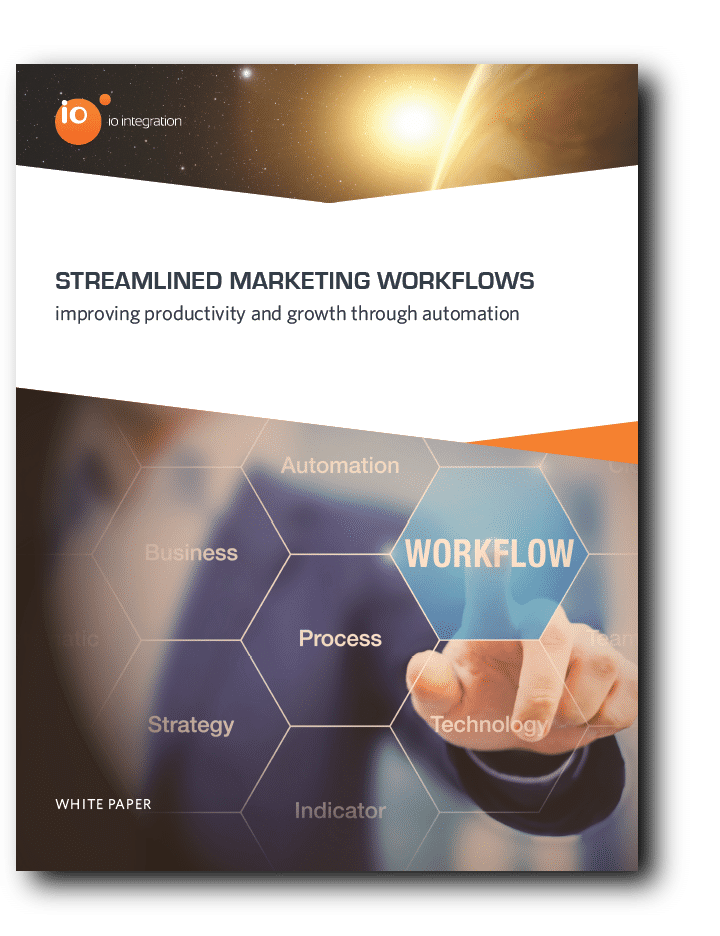Damian has been in the Digital Asset Management and Marketing & Creative Technology space since 1999. With experience in marketing, sales, and the tech side of the business, he's watched the industry evolve from its infancy in
Today’s business landscape is more competitive than ever before, and companies have to work hard just to stand out from the pack. In these circumstances, creativity can become a key differentiator for your organization. 82 percent of executives agree that companies benefit from creativity (although 61 percent of them don’t see their own company as creative).
Creativity is especially important for activities such as branding, advertising, and marketing. Not only does your company have to get customers’ attention and show how you’re different from your competitors, you need to communicate an on-brand message that succinctly conveys the most important selling points of your products.
Unfortunately, putting this concept into practice isn’t always easy for many organizations. Far too often, creative projects have missed deadlines, blown budgets, bottlenecks during review and approval, and miscommunications between different teams and managers.
In recognition of these problems—and in search of a way to resolve them—a growing number of companies are investing in creative operations. This article will go over everything you need to know about creative operations: what it is, why so many businesses are interested in it, and how you can start implementing it within your own organization.
At first glance, the words “creative” and “operations” might seem to be diametrically opposed. How can something as free-form and elusive as creativity be part of a corporate environment?
Yet despite the apparent oxymoron, a growing number of companies are including creative operations in their business workflows. So, why
Broadly, creative operations—sometimes called “creative workflow”—is defined as making the creative process within a business more structured, helping employees move faster and produce better work.
The responsibilities of people who work in creative operations include:

There are three different elements to creative operations that every organization should be concerned with:
Creative operations
Implementing creative operations in your organization first requires a complete and honest understanding of your existing creative workflows. Not only will this help you visualize how creative operations will fit into your business,
This section will discuss the steps that you should take when analyzing your current workflow for creative operations.
Creative projects should be handled responsibly and with care, like any other project that your business carries out. First, understand who typically requests creative
In order to capture all of the necessary requirements, many organizations draft a creative brief: a document for advertising and design projects that outlines the vision for the project as well as the details of how it will be accomplished.
Creative briefs include information such as:
However, a creative brief does little good if it’s not actually adhered to during the project. Managers must oversee the project’s implementation, checking in at regular intervals to make sure that the creative team is staying within the estimated timeline and budget. Understand how resources are assigned to different team members, and determine whether this is the optimal allocation.
The review and approval process is crucial to the successful deployment of your creative assets, but far too many organizations struggle to complete it in a timely manner. Ask yourself questions such as:
By now, the two steps that you’ve gone through above should be more than enough information for you to understand your existing creative operations processes. The next step is to build a flowchart that will visualize your entire workflow, top to bottom.
The practice of creating flowcharts for business processes is known as business process mapping. Flowcharts consist of several important elements:

Once you’ve outlined your current processes using flowcharts, you should have a much better picture of where the hiccups and delays are in your creative workflow. The question now is: what to do with this information?
If you’re completely new to the field of creative operations, it might be wise to work with an outside expert who can help you along the way. While it’s not hard to see the benefits of implementing creative operations for your company, it’s certainly easier said than done. The right third-party partner can help advise you on your specific situation and the tools and technologies you need to call yourself a truly creative, data-driven organization.
In the past several years, interest in creative operations has exploded. Trendsetting companies such as Macy’s and Prudential were among the first to implement a role for “Vice President of Creative Operations.” Now, however, it seems that nearly every company over a certain size has someone who fills these shoes.
What’s behind the growing trend in creative operations? The reasons below help explain the popular interest:

The need for more content is driven by a number of factors - increasing competition, improving the customer experience and ensuring all avenues in the
Download our free guide to learn more about how companies just like yours are investing in digital workflows tools, asset management technologies and approval solutions; which are all designed and delivered with the aim of streamlining operations.
Creative operations can be used in any industry where companies have a sales and marketing department. In this section, we’ll go over some of the ways that different companies in different industries have successfully implemented creative operations for their organization.
Advertising is an industry that’s highly dependent on creativity and finding new ways to capture customers’ attention. Creative workers in the advertising industry constantly face demands to create excellent campaigns across a variety of media channels, all while facing time pressure and budgetary constraints.
By streamlining their workflows, advertising companies can focus less on the mechanics of the actual process, and more on innovative ideas that will draw in customers and beat their competitors. In addition, thanks to automation technologies, many advertising companies can save a great deal of labor when creating, producing, and delivering content.
With email, social media, native advertisements, streaming video, and a variety of other digital platforms, in-house marketing departments have more on their plate than ever before. Managing and distributing content across each of these channels, while maintaining a consistent message and an exceptional customer experience, is by no means an easy feat. 
By leveraging cutting-edge technology solutions for creating and delivering content, you can vastly simplify the creative process. Maintaining your branding and messaging within a single central hub will help you build the right campaigns for the right people and get them reviewed and approved more quickly.
Running effective advertising and marketing campaigns is crucial for retail companies: they spread awareness of your brand, attract the right clientele, and communicate new sales and promotions. 60 percent of consumer goods purchases are made based on the strength of their brand communications.
However, orchestrating better campaigns and targeting the right customer segments will require the right technologies and a more organized, more efficient creative workflow. IOI recently helped one big-box retailer boost its sales by $10 million by making a few key adjustments to its marketing workflows. For example, the retailer now takes 4 months, instead of 6 months, to produce weekly newspaper inserts and direct mailings, and requires one-third fewer staff to do so.
Sales and marketing departments in manufacturing companies face challenges unique to their vertical. With a variety of products on offer, businesses need to run a variety of campaigns targeting different audiences across multiple channels—all the while maintaining a consistent branding, logo, tone, style, and more.
Producing campaigns for different locations, regions, and languages in both digital and print media can be taxing on even the most skilled marketers. That’s where creative operations
The publishing industry is changing rapidly as more and more people choose to consume publications on digital devices such as smartphones, tablets, and e-readers. Many publishing companies are operating on razor-thin margins in terms of both time and budget in order to release the content that their readers are hungry for.
Offerings such as IOI’s DALIM ES online proofing software dramatically simplify and speed up the creative process for publishing companies. DALIM ES allows teammates to share, review, and mark up proofs from any device with Internet access. The software also includes features such as version control and real-time status tracking that are critical for creative operations.
Based on the above sections, there’s a lot to consider before you can make a serious effort to implement creative operations in your company. A feasible set of steps might look something like:
If your business is large enough, it would very likely benefit from hiring a dedicated vice president or director of creative operations. The responsibilities of this person would likely include:
Unless you have prior experience doing creative operations well at another company, we strongly recommend that you reach out to an outside partner who can assist you at every step of the way. At IOI, we help business leaders find the right technology to optimize their creative workflows and unleash innovation.
Creative operations can link up quite nicely with other solutions for making your marketing department more efficient and productive, such as digital asset management (DAM) and workflow software. DAM systems organize your creative and marketing assets under a single roof, making it drastically easier to find the content you need at the right moment.
Meanwhile, workflow technology can help improve and fine-tune your business processes, increasing visibility with valuable analytics that help you understand how long a project is taking or how best to allocate your limited resources. Team leaders get the operational insights they need to assess both their team’s performance and the entire organization’s bottom line.
The most important criterion is to work with a third-party technology partner who truly understands your company’s situation, needs, and business objectives. When both parties put in the effort at the beginning to establish a strong working relationship, you’ll be rewarded with a partner that better knows you and can propose the right solutions for your creative processes.
From improving collaboration to making smarter, data-driven business decisions, creative operations can bring a wealth of benefits to your organization. However, successfully bringing creative operations into your company will require a great deal of careful planning, analysis, and self-reflection in advance. By working with a third-party technology partner, you can receive a great deal of invaluable expert advice, as well as the enterprise software solutions that you need, in order to add creative operations to your business.
Want access to all of this information at your
Simply fill out the form below to download this page as a PDF, and take it with you anywhere.
© 2024 IO Integration, Inc.